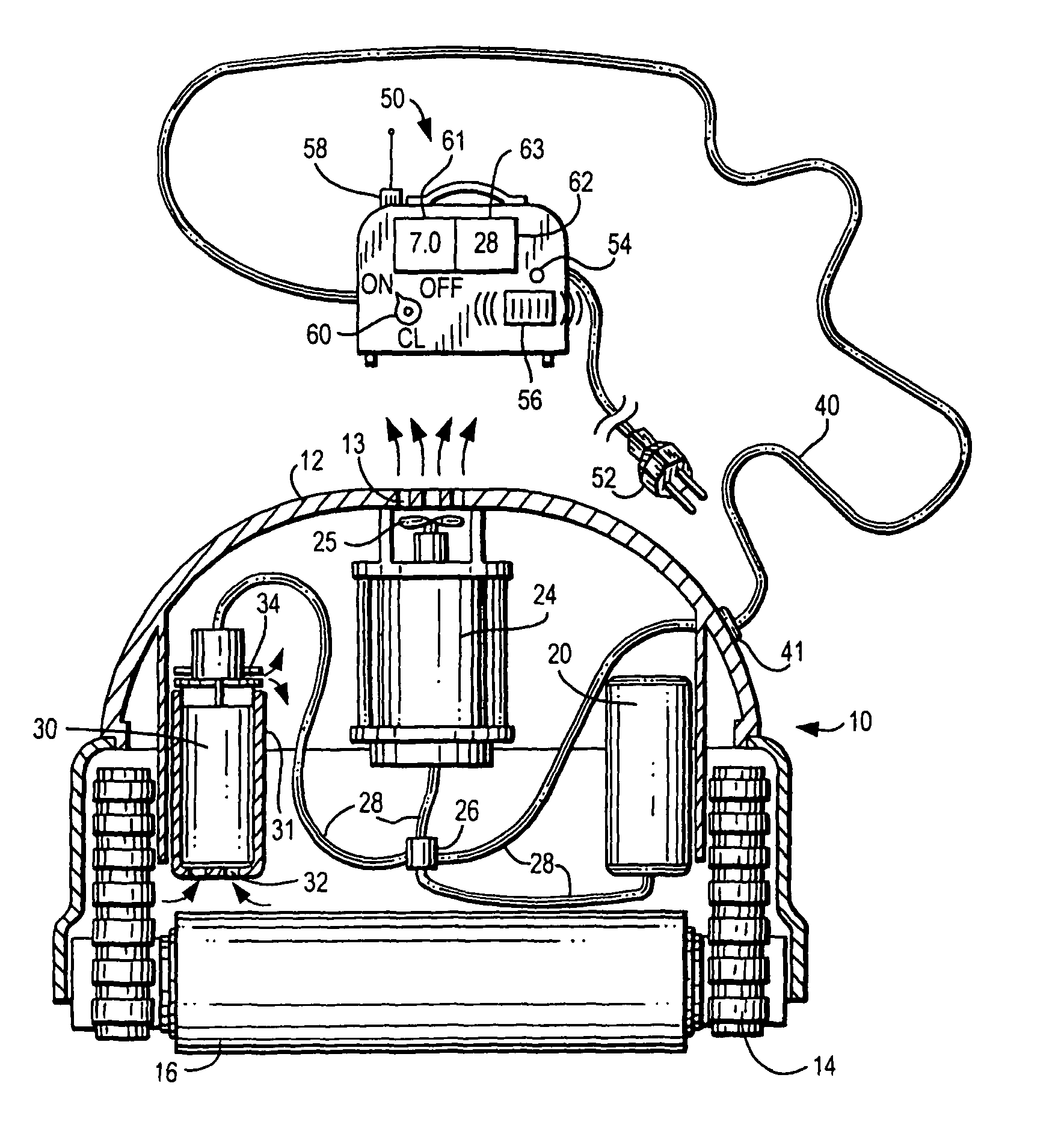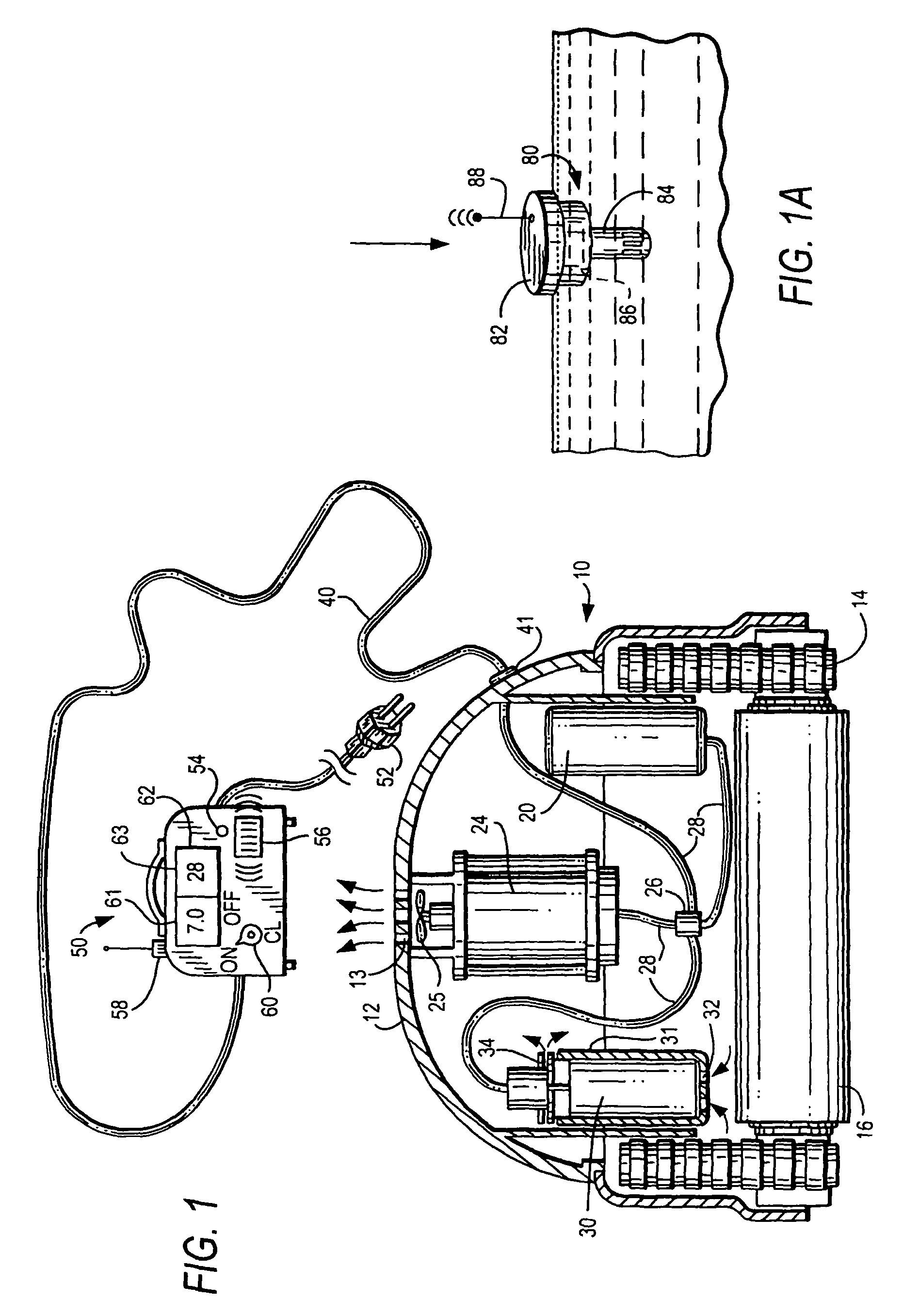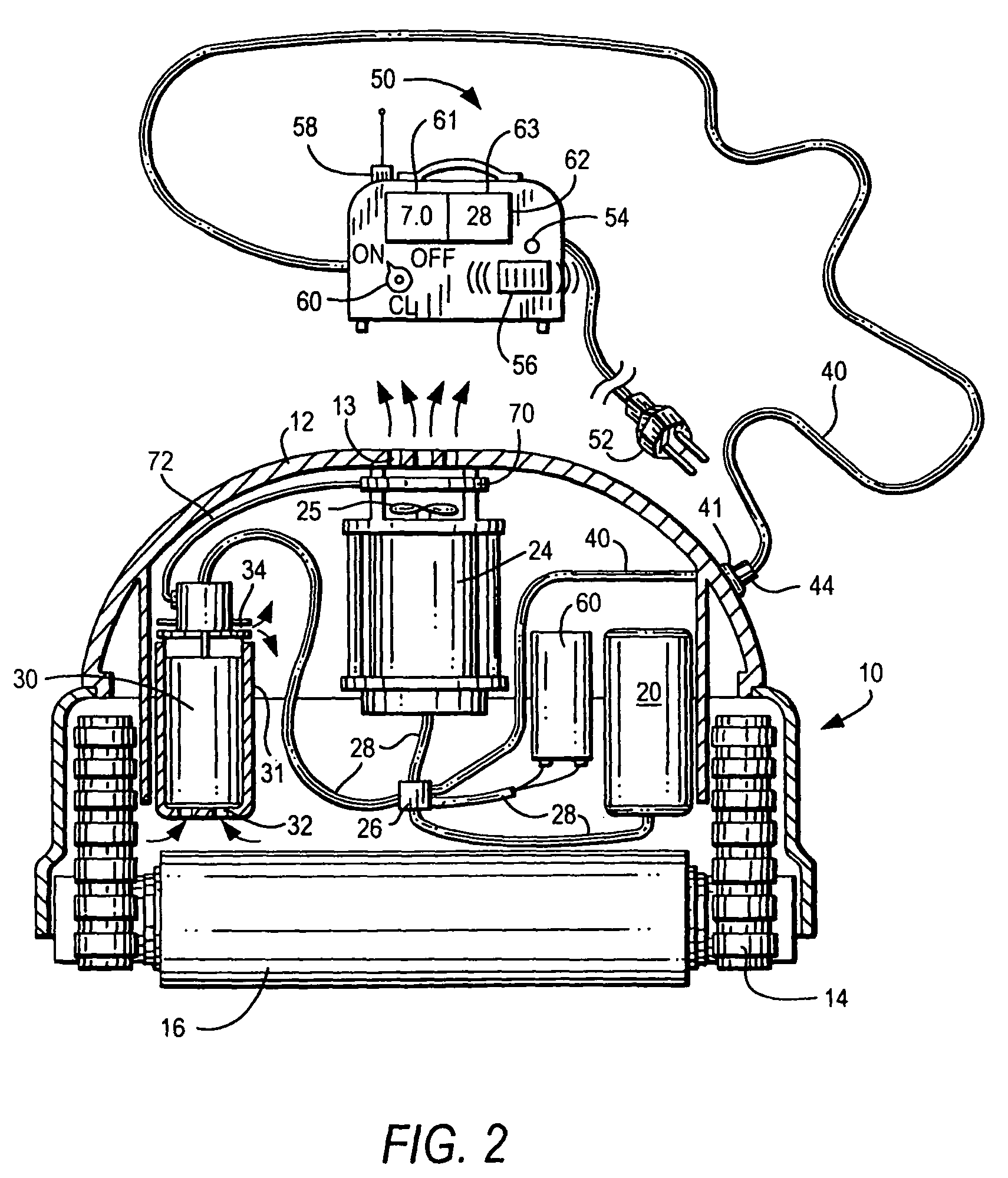Method and appartus for operation of pool cleaner with integral chlorine generator
a chlorine generator and pool cleaner technology, applied in the field of robotic, self-propelled pool cleaners, can solve the problems of adding to the overall operating cost, mechanical complexity of the denkewicz apparatus, and more expensive manufacturing, and achieve the effect of efficient and effective chlorine distribution
- Summary
- Abstract
- Description
- Claims
- Application Information
AI Technical Summary
Benefits of technology
Problems solved by technology
Method used
Image
Examples
Embodiment Construction
[0078]Referring now to FIG. 1, a preferred embodiment of the method and apparatus of the invention will be described in conjunction with a conventional robotic pool cleaner 10 that is electrically connected via cable 40 to remote poolside power supply 50. The principal elements illustrated are the pool cleaner body cover or housing 12, a pair of drive means 14 and a cleaning brush 16, the drive means being powered by drive motor 20. Also mounted in the housing is a conventional pump motor 24 with attached impeller 25 that draws water through a filter element (not shown) and discharges the filtered water through outlet 13 in the housing 12.
[0079]In accordance with the invention, also mounted on the interior of the housing is electrochemical chlorine generator 30 having inlets 32 through which salt water passes and, as a result of the electrolysis, generates biocidal chlorine that is dissolved in the water that is discharged through outlets 34. As will be understood by one of ordinary...
PUM
| Property | Measurement | Unit |
|---|---|---|
| thick | aaaaa | aaaaa |
| thick | aaaaa | aaaaa |
| time | aaaaa | aaaaa |
Abstract
Description
Claims
Application Information
 Login to View More
Login to View More - R&D
- Intellectual Property
- Life Sciences
- Materials
- Tech Scout
- Unparalleled Data Quality
- Higher Quality Content
- 60% Fewer Hallucinations
Browse by: Latest US Patents, China's latest patents, Technical Efficacy Thesaurus, Application Domain, Technology Topic, Popular Technical Reports.
© 2025 PatSnap. All rights reserved.Legal|Privacy policy|Modern Slavery Act Transparency Statement|Sitemap|About US| Contact US: help@patsnap.com



